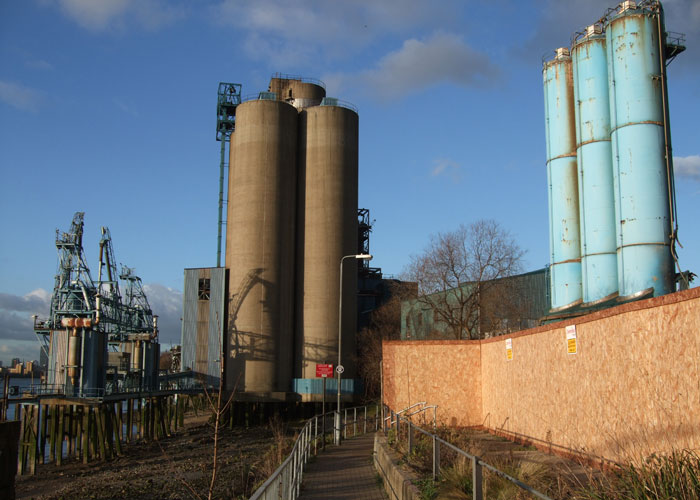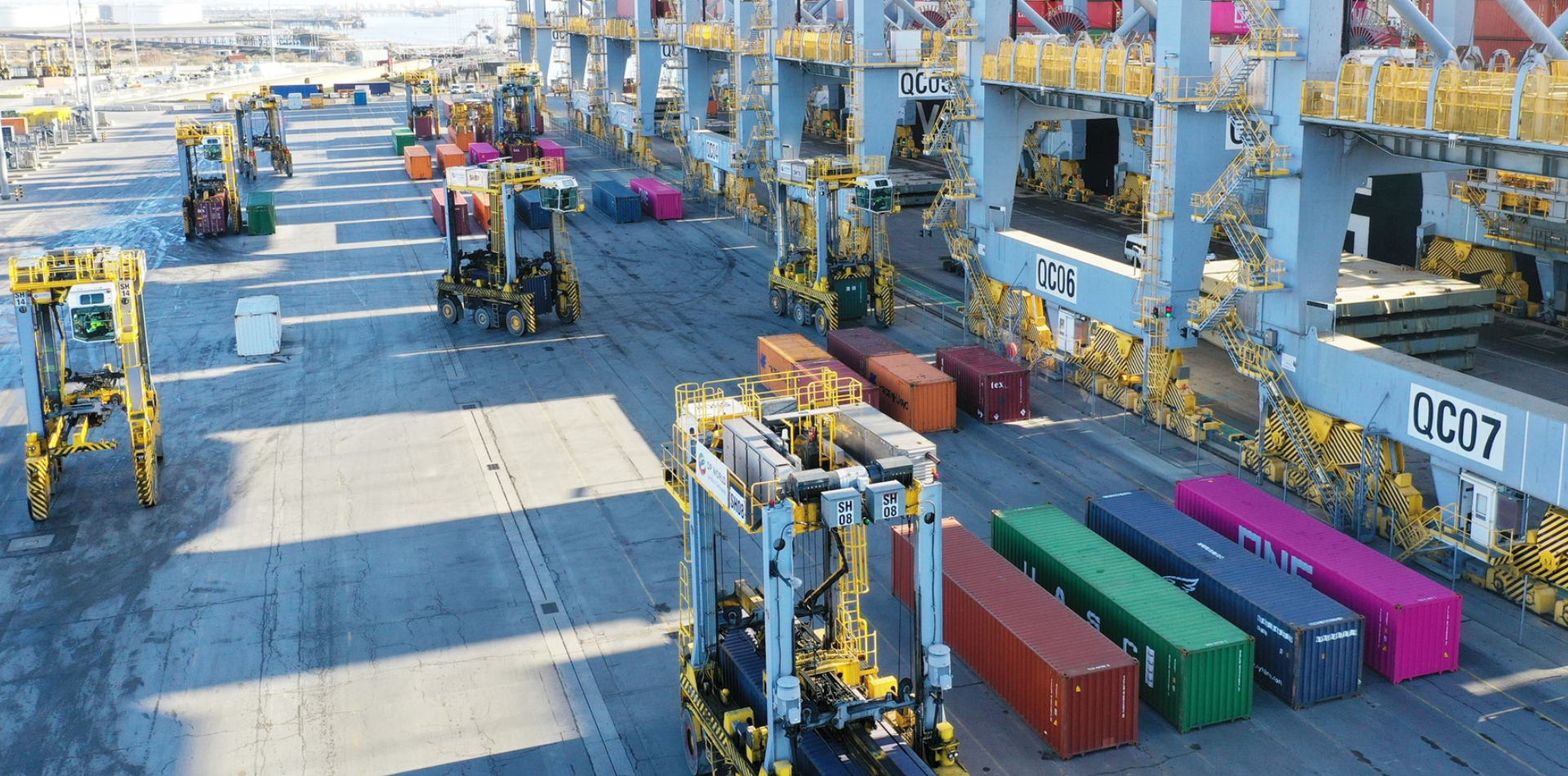You are using an out of date browser. It may not display this or other websites correctly.
You should upgrade or use an alternative browser.
You should upgrade or use an alternative browser.
Industrial London.
- Thread starter luka
- Start date
luka
Well-known member
London industrial property has long been one of the strongest performing sectors of the UK property market. As an investment, the case for owning London’s industrial property is extremely compelling. Industrial property is a vital asset to many businesses serving the capital’s needs, but sites are under intense pressure from alternative uses as a growing population places ever greater demands on land.
London industrial is a new report which follows an extensive survey of industrial properties across inner London. Despite offering consistently high returns, this sector has, until now, seen very little detailed analysis. This report for the first time offers a more granular view.
London industrial is a new report which follows an extensive survey of industrial properties across inner London. Despite offering consistently high returns, this sector has, until now, seen very little detailed analysis. This report for the first time offers a more granular view.
luka
Well-known member
A key contributor has been the diminishing level of supply. As London has grown in density over the past few decades, industrial land has often been converted to other higher value uses such as residential or offices. Across Greater London as a whole, industrial floorspace has fallen by 19% from 2000 to 2012, according to the Valuation Office Agency and decreased by 46% since 1984 (see over).
luka
Well-known member
A journey across inner London, either by road, rail or water, shows clear evidence of the capital’s industrial past, with a selection of warehouses, power stations, docks and yards in every borough. Over time however, much of this has been converted to higher value residential and / or alternative commercial use. A clear example of this is the Isle of Dogs which has seen an entire business district rise out of historic waterways over the past 25 years. Transformation of the industrial East End has gathered pace as a result of hosting the London Olympic Games in 2012.As industrial businesses have shut or relocated, large land-hugging sites of industry make way for the new needs of the city, largely driven by the service sector. Consequently, the industrial ‘face’ of London continues to change
sufi
lala
I live on the site of the former Metal Box Factory https://www.gracesguide.co.uk/Metal_Box_Co
luka
Well-known member
Manufacturing businesses continue to retain space in what has become a predominantly service-driven capital city. Although manufacturing conjures up images of heavy industry, modern manufacturing companies are lighter in scale. Products range from glass, plaster products, bespoke metal works to electrical components and plastics. Businesses that produce goods rather than provide services account for 8% of the industrial occupier base. Greenwich is the borough that has the highest number of such occupiers, with one in five involved in manufacturing
luka
Well-known member
Central Services area, which is dominated by businesses servicing the West End and City / Docklands office,retailand leisure economies. Typically, demand in this area is driven by companies which must be near their customers.
•Thames Gateway, to the east, which has developed as a significant location for large-scale warehouses and logistics facilities, notably along the A13 corridor, where a number of major new developments have been constructed over recent years
.•Lea Valley in north east London, which is a major industrial and warehouse location, notably between the North Circular Road and the M25, in Enfield.
•Park Royal and associated corridors around the A40 are now driven by warehousing and logistics activities and small-scale manufacturing / quasi service activities. Whilst also in the west, Heathrow is driven by airport-related activities, including air freight, but also all the industries required for the air industry to function (e.g. aircraft maintenance, in-flight catering etc.).
•Wandle Valley to the south, includes significant clusters of industrial and warehouse users, notably in Merton, Suttonand Croydon (off the A23 in particular) and includes a number of SILs
•Thames Gateway, to the east, which has developed as a significant location for large-scale warehouses and logistics facilities, notably along the A13 corridor, where a number of major new developments have been constructed over recent years
.•Lea Valley in north east London, which is a major industrial and warehouse location, notably between the North Circular Road and the M25, in Enfield.
•Park Royal and associated corridors around the A40 are now driven by warehousing and logistics activities and small-scale manufacturing / quasi service activities. Whilst also in the west, Heathrow is driven by airport-related activities, including air freight, but also all the industries required for the air industry to function (e.g. aircraft maintenance, in-flight catering etc.).
•Wandle Valley to the south, includes significant clusters of industrial and warehouse users, notably in Merton, Suttonand Croydon (off the A23 in particular) and includes a number of SILs
luka
Well-known member
What Industrial Activity takes place in London
There are broadly four categories of activity that take place on industrial land in London
:•Manufacturing and other industrial activity
•Distribution and logistics
•Wider industrial type uses such as land for transport, waste and utilities
•Service activities that operate from industrial land or premises
We set out below the nature of activity and recent trends for each of these four broad categories of activity and project future demand for industrial land that is likely to arise,based on existing trends
There are broadly four categories of activity that take place on industrial land in London
:•Manufacturing and other industrial activity
•Distribution and logistics
•Wider industrial type uses such as land for transport, waste and utilities
•Service activities that operate from industrial land or premises
We set out below the nature of activity and recent trends for each of these four broad categories of activity and project future demand for industrial land that is likely to arise,based on existing trends
luka
Well-known member
Located on the border of Ealing, Brent and Hammersmith, Park Royal is London’s largest industrial site. The birthplace of the Routemaster bus, Park Royal is home to household names such as McVities, who have been making biscuits here for over 100 years and today have over 700 employees. While Sunbeam Group, who have 35 employees, design and install shop fittings for the likes of Selfridges. Nearby is Brompton Bicycles, who recently moved to a new larger site in Greenford. Down the road in Chiswick is Fullers’ Griffin Brewery – London’s oldest brewery – that has been providing the city with fine Ale since 1845. Together with neighboring boroughs, Hillingdon and Hounslow, this part of North West London accounts for nearly a third of total manufacturing employment.
Many manufacturing workers can also be found alongside the River Thames in East London. Industrial sites on either side the river span the boroughs of Greenwich, Newham, Bexley, Havering and Barking and Dagenham. The Ford engine factory in Dagenham Dock is reportedly the single largest manufacturing plant in London, with 1,800 employees. “Out of the strong, came forth sweetness” – goes the motto of UK heritage brand Tate & Lyle who have two sites on the Silverside peninsula in Newham. Their Thames Refinery is the largest sugar refinery in the EU. While a mile away their Plaistow Wharf site ships out over a million tins of golden syrup every month.
One of the largest industrial corridors in London, the Upper Leigh Valley spans the boroughs of Enfield, Haringey, Waltham Forest and Hackney. Once famous for guns and motorcycles, today it acts as a gateway to and from London, given its proximity to the North Circular. There is a Warburton’s factory working around the clock to provide the city with its daily bread while Coca Cola has been bottling drinks here for over 40 years.
Many manufacturing workers can also be found alongside the River Thames in East London. Industrial sites on either side the river span the boroughs of Greenwich, Newham, Bexley, Havering and Barking and Dagenham. The Ford engine factory in Dagenham Dock is reportedly the single largest manufacturing plant in London, with 1,800 employees. “Out of the strong, came forth sweetness” – goes the motto of UK heritage brand Tate & Lyle who have two sites on the Silverside peninsula in Newham. Their Thames Refinery is the largest sugar refinery in the EU. While a mile away their Plaistow Wharf site ships out over a million tins of golden syrup every month.
One of the largest industrial corridors in London, the Upper Leigh Valley spans the boroughs of Enfield, Haringey, Waltham Forest and Hackney. Once famous for guns and motorcycles, today it acts as a gateway to and from London, given its proximity to the North Circular. There is a Warburton’s factory working around the clock to provide the city with its daily bread while Coca Cola has been bottling drinks here for over 40 years.
sufi
lala
90 metre musical dome planned for stratford you lucky thing https://www.theguardian.com/busines...ns-biggest-concert-hall-face-local-opposition
luka
Well-known member
Kaymet is a manu-facturer of luxury trays, trolleys and electric table hotplates. Based in Peckham, this small manufacturer has been making anodised aluminium ware since 1947. Today they have 7 employ-ees. Their products are stocked worldwide, including in London’s most famous department store, Harrods
john eden
male pale and stale
Angry Workers of the World have done a bunch of work in Park Royal which is really interesting:
 angryworkersworld.wordpress.com
angryworkersworld.wordpress.com
Their book "Class Power on Zero Hours" is worth a read and there are some amazing stats in there about how most of the food in London comes from a few square miles of industrial estate in west London.
Home - Angry Workers
 angryworkersworld.wordpress.com
angryworkersworld.wordpress.com
Their book "Class Power on Zero Hours" is worth a read and there are some amazing stats in there about how most of the food in London comes from a few square miles of industrial estate in west London.
luka
Well-known member
theres no one here that will remember this but one of the things about coming out on the south side of blackwall tunnel was the smell. very distinctive.
"
Tunnel Refineries – latterly known as Amylum, Tate and Lyle, and Syral – closed in September 2009 with the loss of 150 jobs. I walked through the site about a month ago, and its distinctive whiff could still be detected. When I was growing up, that sickly-sweet smell could drift for a good couple of miles, and was pretty much ever-present on the peninsula.
The closer you got, the fouler it was, but there was something comforting about coming home after a long journey, emerging from the Blackwall Tunnel, and getting a noseful of it. Historians will be noting another break from Greenwich’s industrial past, with what’s left of Alcatel/STC at Enderby Wharf awaiting redevelopment. The warehouses at Delta Wharf also came down recently, making the west side of the peninsula a strange, barren place to be."

 853.london
853.london
"
Tunnel Refineries – latterly known as Amylum, Tate and Lyle, and Syral – closed in September 2009 with the loss of 150 jobs. I walked through the site about a month ago, and its distinctive whiff could still be detected. When I was growing up, that sickly-sweet smell could drift for a good couple of miles, and was pretty much ever-present on the peninsula.
The closer you got, the fouler it was, but there was something comforting about coming home after a long journey, emerging from the Blackwall Tunnel, and getting a noseful of it. Historians will be noting another break from Greenwich’s industrial past, with what’s left of Alcatel/STC at Enderby Wharf awaiting redevelopment. The warehouses at Delta Wharf also came down recently, making the west side of the peninsula a strange, barren place to be."

Tunnel Refineries to go out with a whimper, not a bang - 853
A bit of excitement a couple of weeks ago as news reached 853 Towers of a “controlled explosion in Tunnel Avenue”. Not that anyone locally had been told, but Canary Wharf workers had been informed in case they thought the worst. Two and two were put together, and it seemed as if the silos at […]
 853.london
853.london
john eden
male pale and stale
It's hugely telling that London Gateway is now between Stanford Le Hope and Canvey Island.

 www.londongateway.com
www.londongateway.com
I found it deeply weird when I went there - a vast alien landscape, much of it automated. Massive cranes and machines, loads of space. But mainly containers. I felt like an ant.
We watched The Long Good Friday at the weekend and you could see that 1980 was a real turning point in terms of the docks along the river in the middle of London.

Home
I found it deeply weird when I went there - a vast alien landscape, much of it automated. Massive cranes and machines, loads of space. But mainly containers. I felt like an ant.
We watched The Long Good Friday at the weekend and you could see that 1980 was a real turning point in terms of the docks along the river in the middle of London.
luka
Well-known member
The Lea Valley - River Lee
River Lee photos by Peter Marshall from 1980s to current day. Also known as River Lea, and includes the Lee Navigation and associated canals and rivers. Includes the London Olympics 2012 area around Stratford, Bow Creek, Limehouse Dock and north to the source at Leagrave near Luton.
river-lea.co.uk

